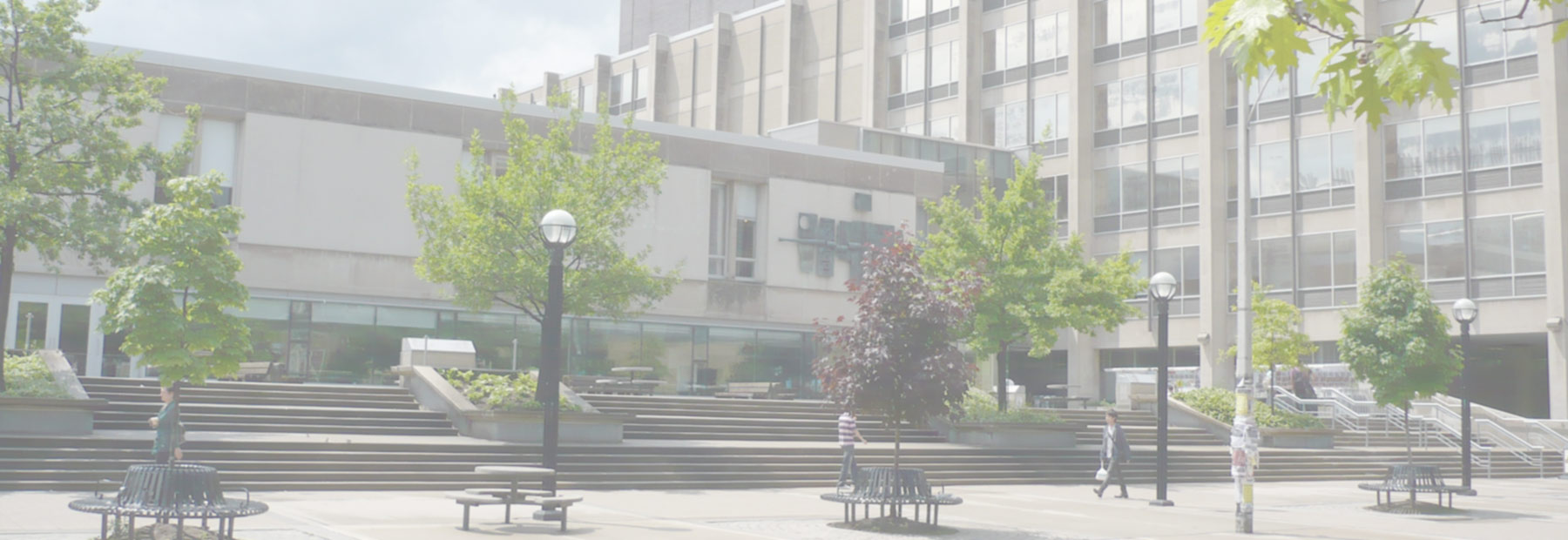Campus
- Downtown Toronto (St. George)
Fields of Study
- Aesthetics
- North American
- Modern/Contemporary
- Middle Eastern
- European
- Art Historiography
- Architecture
Areas of Interest
- Architecture
- Urban Planning
- Spatial Planning
- History of Architectural Theory
- Philosophy of Art and Technics
- Northern Territories of America, Canada, Russia and Europe
- Arctic Cities
- Architectural and artistic relationships and cultural transfers between Europe and America
Name of Postdoctoral Fellowship
Description
The integration of climatic factors into architectural design is part of international trends within modern architecture, experiencing a significant new stage of development after the war. Notable works include those of David Oakley (1927-2003), Otto Koenigsberger (1908-1999), Victor Olgyay (1910-1970), Georges Anthony Atkinson, and Richard Neutra, Edwin Maxwell Fry (1899-1987) and Jane Drew (1911-1996). The industrialization of construction quickly raised the question of necessary geoclimatic differentiation. A branch of architectural climatology particularly focuses on architecture and urban planning in Arctic contexts. As part of our thesis, we studied research conducted by Soviet institutes such as the Zonal Institute of Experimental Research and Design of Leningrad (LenZNIIEP), the Moscow Institute of Architecture, and the Institute of Theory and History of Architecture and Urban Planning of the USSR (NIITI). Technical missions sent by Gosstroy (State Committee for Construction in the Soviet Union) to Canada focused particularly on construction issues in the Far North and on city projects, realized or not, such as Inuvik and Frobisher Bay in Canada. In 1955, biophysicist Alan C. Burton (1904-1979) and British physiologist Otto Gustav Edholm (1909-1985) from the University of Western Ontario published "Man in a Cold Environment: Physiological and Pathological Effects of Exposure to Low Temperatures," which was translated into Russian in 1957. We will also mention the work of Jeffrey Ellis Aronin (1927), a professor at the University of McGill in Winnipeg, Canada, author of "Climate and Architecture," which has become a major reference for architects and engineers specializing in this field. The book was published in Russian in 1959.
Our research will aim to reconstruct a history of the circulation of models, techniques, knowledge, and theories in this field within the context of the internationalization of post-war architecture. This involves situating research and projects in architectural climatology for polar regions, produced in different countries, particularly those states with territories in the Arctic (Canada, USSR, United States, Denmark, Norway), within the development of international exchanges in architecture, international architectural standardization, and the emergence of a global architecture market. It will also be important to contextualize these productions within the Cold War context, which saw architects, urban planners, and developers serving strategic interests, both in terms of the natural resources of these territories and the geographical position of Arctic regions at the intersection of different blocs and their military significance. The evolution of climatic architecture is situated within the broader emergence of economic geography, which encompasses the establishment of human settlements and its translation into spatial planning. One of the earliest works emphasizing the physical, spatial implementation of geo-economic planning was written by Thomas Adams (1871-1940) on the Canadian territory, before similar works emerged in Russia with Lenin's GOELRO Electrification Plan, in the United States with the works of the RPAA (Regional Planning Association of America), and in England with the works of the Town and Country Planning Association. Canada's role as a model for economic regionalization, as well as a laboratory for construction techniques tailored to specific climatic contexts, has thus far received little attention from European research. Our research project stands to benefit from Canadian bibliographic and documentary resources, as well as archival funds that are essential for our inquiries. These include the archives of the Department of Public Works, which funded research and construction projects for northern regions, the Samuel Gitterman Fund (1911-1988), responsible for developing housing programs in the Canadian Far North for the Canada Mortgage and Housing Corporation, the archives of architect Harold Spence-Sales (1907-2004), a leading theorist of urban decentralization, and Edwin Alexander Gardner (1902-1986), an architect at the Department of Northern Affairs of Canada. By examining Canadian, American archives, as well as those already studied in Russia, we aim to explore the exchanges that have developed in these areas at the international level. This involves examining exchanges between architects and firms, as well as within international organizations such as the International Union of Architects, International Congresses of Modern Architecture, International Federation for Housing and Planning, CIB (International Council for Research and Innovation in Building and Construction), and RILEM (The International Union of Laboratories and Experts in Construction Materials, Systems, and Structures).
Presentations
Administrative Service
Biography
I completed my PhD in Architectural History at Sorbonne University, Centre Chastel (UMR8150), under the supervision of Jean-Baptiste Minnaert in 2024. My thesis "The Major Transformations of Architecture and Urbanism in the USSR 1953-1965: Renewal of Theory and Practice in Architecture and Urbanism" focuses on the interconnected histories and cultural and technological transfers in architectural and urban theory and practice in the USSR during the 1960s-1980s. Between 2017 and 2022, I worked as a Research Fellow in the Global Art History Domain of the Department of Studies and Research at the National Institute for Art History (INHA, Paris), Ministry of Culture of France. Between September 2022 and August 2024, I taught art philosophy as Non-Tenured Teaching and Research Associate at the Department of Arts of the University of Aix-Marseille. Since September 2024 I have held the position of postdoctoral researcher in the Department of Art History at the University of Toronto, conducting comparative research on architectural forms developed in the 20th century at the intersection of artistic imaginaries and scientific research around the Arctic, in Russia and Canada.
Selected Publications
- G. Vjazemceva, S. Gaessler, K. A. Malič, I. E. Pečenkin (ed.), Boris Iofan.Paths of Architecture in the 1920s-1940s. On the 130th Anniversary of the Architect, Moscow, Kučkovo Pole Muzeon, 2023, 480 p.
- “Connected histories of architectural transfers between USSR and China (1949-1959)” in Ink Meets Oil: Chinese Artists Trained in Europe (1920-1945), edited by Sarah Fraser and Shen Kuiyi, Institut für Kunstgeschichte Ostasiens Ruprecht-Karls Universität Heidelberg, Getty Research Institute, Brill. Upcoming Publication, 2025.
- “Regional planning in Soviet Russia and the influence of Western welfare policies (1945-1970)”, in Planning as a welfare project, edited by Dorian Bianco, Lausanne, Peter Lang. Upcoming Publication, 2025.
- “The Gothic Taste in the Works of Vasily Bazhenov: Cultural Transfer Experience”, Enlightenment Gothic: Vasily Bazhenov anniversary year, Moscow, IN ARTIBUS foundation, Schusev State Museum of Architecture Publ., 2017, 770 p.
- “Prospective and experimental utopias in 1960s Soviet architecture”, EHNE, Digital Encyclopedia of European History, [online], ISSN 2677-6588, published on 22/06/20, Permalink: https://ehne.fr/en/node/12444.
Honours, Awards and Grants
- 2017-2022 - Doctoral Fellowship, National Institute of Art History, Ministry of Culture of France, Global Art History Department. Doctoral contract with the Ministry of Culture.
- 2021-2022 - International Emerging Action 2020 Grant of the CNRS (The National Centre for Scientific Research) n° 21-512-15002: “The architects of Russia in Europe: cultural transfers and intertwined destinies from the first Russian revolution to the fall of the USSR: Italy, France, Great Britain (1905-1991)”. With Jean-Baptiste Minnaert director of the André Chastel center leading the French side of the project, Anna Vyazemtseva (Russian project leader), Armen Kazaryan, Ksenia Malich, Ilia Pechenkin (NIITIAG). Amount awarded from CNRS France: 20 000 euros.
Professional Affiliations
- University of Toronto, Faculty of Arts and Science.
- Sorbonne University, Centre André Chastel (UMR8150), CNRS, Ministry of Culture.
- National Institute of Art History, Ministry of Culture of France.


